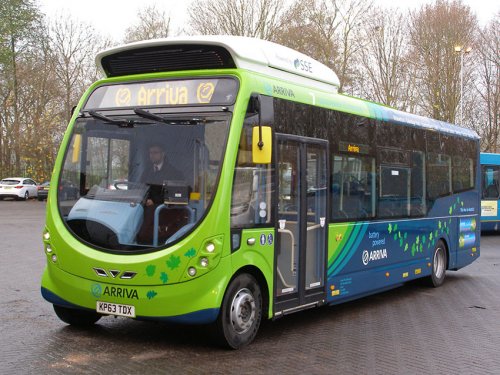Will Wireless Hypercharging Soon Be Used In All-Electric Buses?
 In an exchange of views over Proterra’s decision to use Toshiba’s (TOSBF) Lithium-Titanate Oxide published last year on the Green Car Congress, I was left with the impression that we are indeed moving much faster than expected a couple of years ago towards electric propulsion. There are many things that can be said regarding all-electric buses.
In an exchange of views over Proterra’s decision to use Toshiba’s (TOSBF) Lithium-Titanate Oxide published last year on the Green Car Congress, I was left with the impression that we are indeed moving much faster than expected a couple of years ago towards electric propulsion. There are many things that can be said regarding all-electric buses.
First, that they use a lot of lithium, which implies that their massive deployment may be great news for lithium as well as Li-ion battery producers around the world. I understand BYD’s buses need about three times more lithium than Tesla’s (TSLA) Model S’s. As is well known, some battery chemistries use more lithium than others. That’s precisely the case with Proterra, because the kind of batteries Toshiba manufactures happens to require lithium not only for the cathode and the electrolyte of the battery but also for its anode.
Second, as one commentator suggested in that discussion, these batteries are likely to be heavier as well which should lead us to search for lighter materials for the different parts of this important means of public transportation. Here I suggested that maybe the time has come for magnesium, to which another commentator replied that aluminum would be the material of choice due to its reduced cost. I’m not so sure about that but I’ll wait and see what results from a pending investigation I’ve been carrying out for a number of years in regard to that subject.
Third, I learned there that BYD’s buses - which I’d say cost about half Proterra’s buses – just passed the crash test in the US and are preparing for another one before they can be authorized for commercialization in the world’s largest market for electric vehicles. Note that they have already sold 1,300 all-electric buses worldwide.
Lastly, we discussed the charging issue of the city e-buses and here I argued that wireless super duper charging (remember my previous blog published almost two years ago?) or simply hypercharging would make a lot of sense. Why? Because buses move from one station to another and their batteries could be recharged almost invisibly in those stop-stations as they take a couple of minutes to pick up passengers. Do you agree?
Disclosure: None




Are there any safety considerations that have to be taken into consideration with using Magnesium?
I don't believe Magnesium poses any threat these days, but I am far from an expert. Perhaps the author will weigh in.
As described in a wikipedia entry (See: http://en.wikipedia.org/wiki/1955_Le_Mans_disaster), magnesium was blamed for most of the Le Man’s accident in 1955 where one competitor plus 83 spectators died, “either by flying debris or from the fire”, and 120 were injured. In a fairly recent article (See: magnesiuminvestingnews.com/...teriors-anymore.html) it’s clear that conditions and perspectives of magnesium have since dramatically changed.
I haven't read about any problems with Magnesium here or elsewhere. But I believe that if there were any issues, Juan Carlos who have mentioned it in the article.
I agree completely. I see this being the future of public transportation in just the way you outlined.